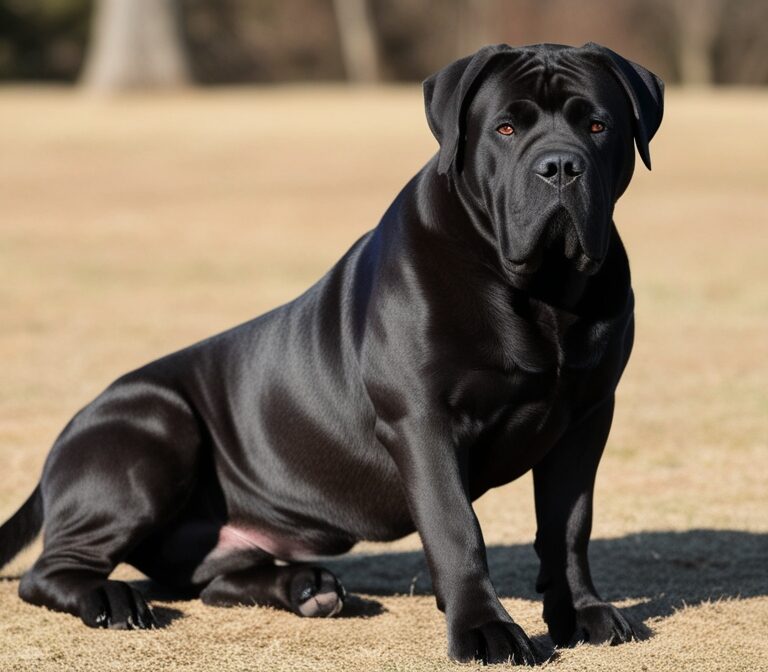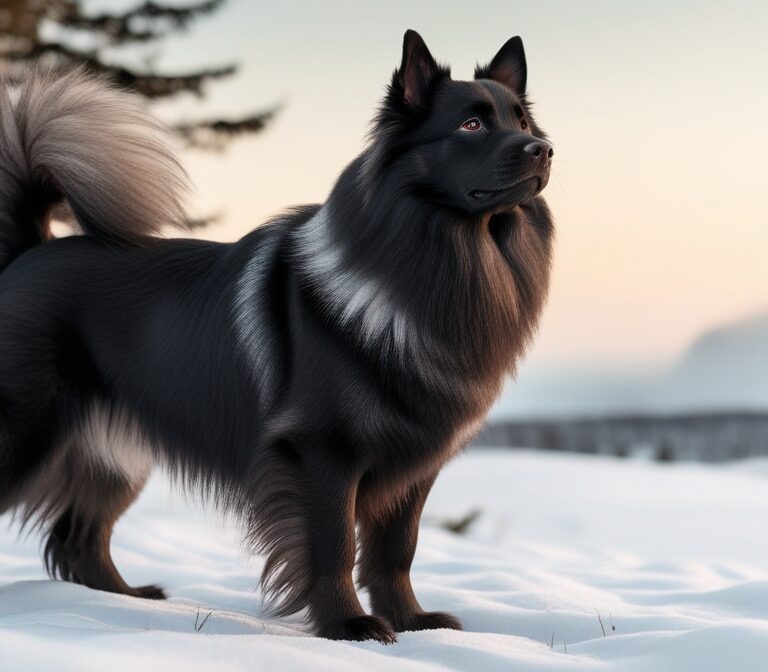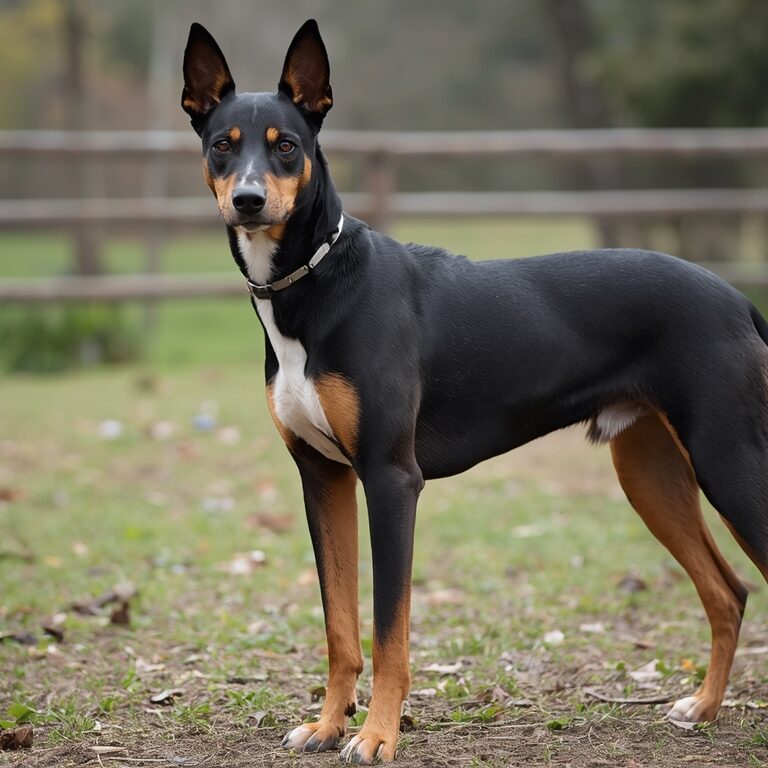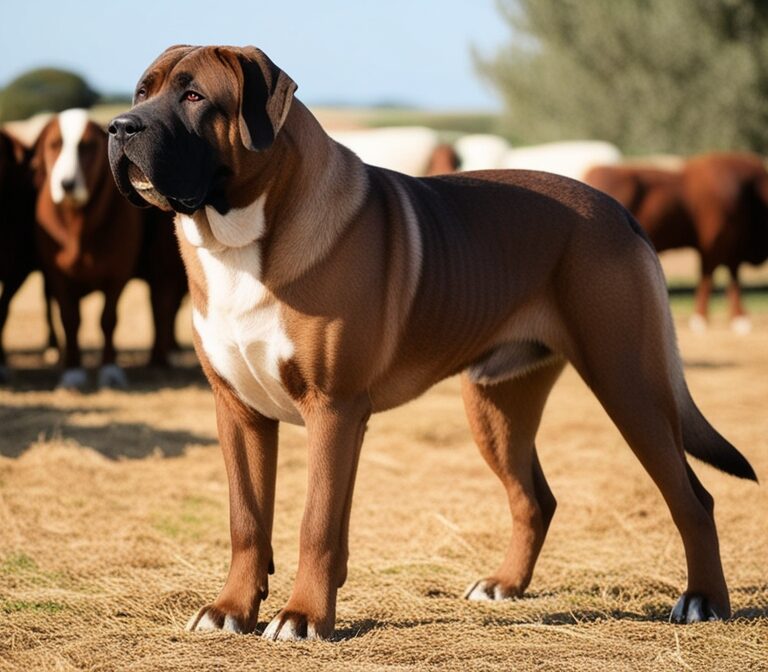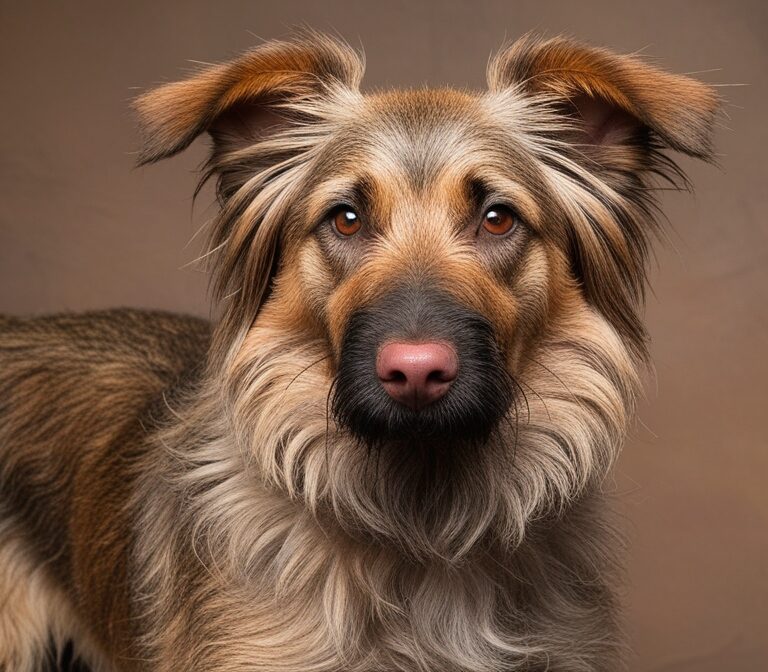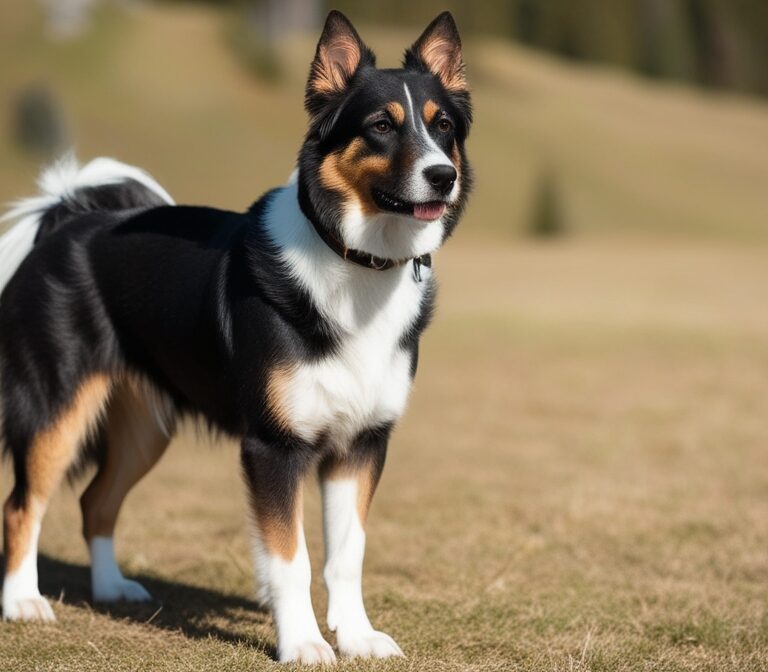The Ultimate Guide to the Neapolitan Mastiff: History, Care, Training, and Breed Insights
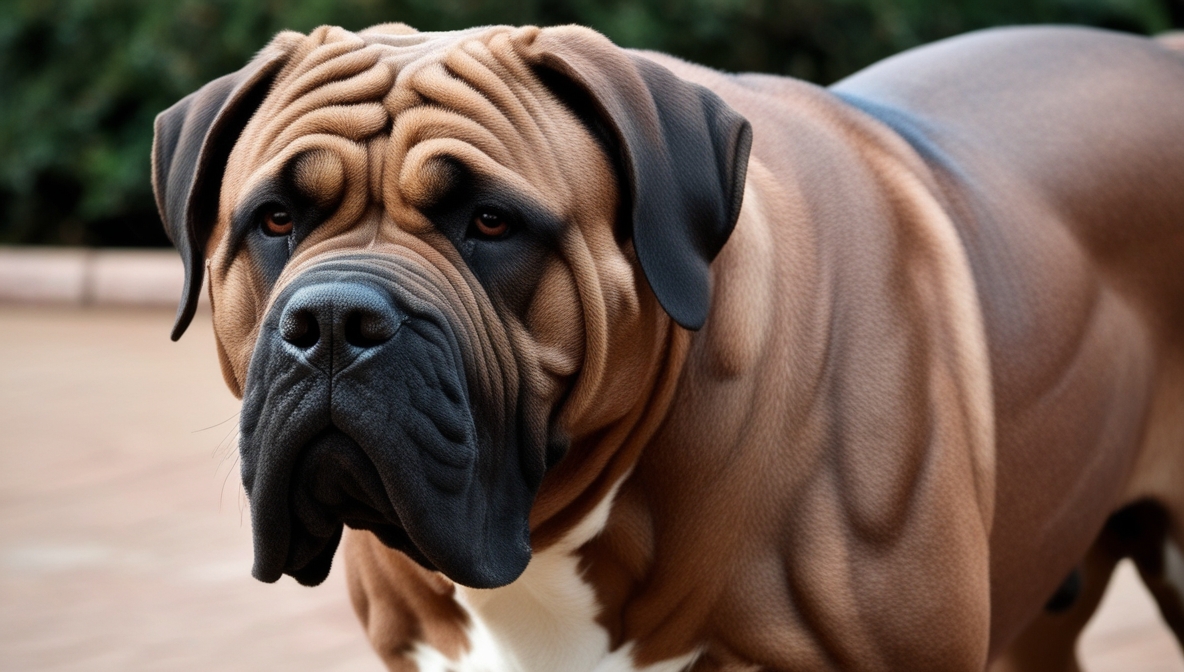
What is the Neapolitan Mastiff?
The Neapolitan Mastiff, also known as the Mastino Napoletano, is a giant dog breed famous for its massive size, wrinkled skin, and protective instincts. Originally bred in Italy, this dog was designed to guard estates, families, and livestock. Unlike other mastiff breeds, the Neapolitan Mastiff carries a unique appearance characterized by loose skin folds, droopy jowls, and a broad, muscular frame.
Belonging to the Molosser group of dogs, the Neapolitan Mastiff has roots tracing back to ancient Roman war dogs, specifically the Molossoid dogs that marched alongside Roman legions. These ancestors were bred not only for size and intimidation but also for loyalty and fearlessness. Over centuries, selective breeding in the Naples region of Italy refined the Neapolitan Mastiff into the protective guardian we recognize today.
Modern kennel clubs such as the AKC (American Kennel Club) and FCI (Fédération Cynologique Internationale) recognize this breed under the working dog category. Its reputation as a guard dog remains unmatched due to its instinctive territorial behavior, watchful eyes, and deep protective loyalty to family members.
Unlike more playful breeds, the Neapolitan Mastiff is calm, reserved, and serious. Its personality is best suited for experienced dog owners who understand the balance of training, socialization, and proper care required for such a large, stubborn, yet affectionate breed.
In essence, the Neapolitan Mastiff is not just a dog; it is a living piece of Italian heritage, a guardian by nature, and a gentle giant at heart when raised in a loving environment.
History and Origin of the Mastino Napoletano
The history of the Neapolitan Mastiff is deeply tied to ancient Rome and the traditions of southern Italy. This breed descends from Molosser dogs, a category of large, muscular canines that were spread throughout Europe and Asia by the Greeks and Romans.
Roman armies once used massive dogs known as Canis Pugnax in warfare, guarding camps, and even participating in gladiatorial arenas. These dogs were bred for both intimidation and protection. After the fall of the Roman Empire, some of these dogs continued to thrive in the Naples region, where local breeders selectively developed them into what we now call the Mastino Napoletano.
Unlike the English Mastiff or Bullmastiff, which were shaped by British breeding traditions, the Neapolitan Mastiff remained relatively isolated in Italy for centuries. Farmers and estate owners in southern Italy valued them for their guardian instincts, fearless temperament, and ability to protect property from intruders.
The breed was officially standardized in the mid-20th century, thanks to the efforts of Italian breeders who wanted to preserve this unique guardian. In 1946, the Neapolitan Mastiff was showcased at the Naples Dog Show, which led to formal recognition by international kennel clubs. The FCI recognized the breed in 1949, and later, the AKC followed in 2004, cementing its status as a global dog breed.
Today, while still rare outside Italy, the Neapolitan Mastiff is celebrated as a living relic of Roman heritage and a symbol of loyalty and protection.
Neapolitan Mastiff and the Molosser Group
The Neapolitan Mastiff belongs to the Molosser group of dogs, which includes Cane Corso, Tibetan Mastiff, Bullmastiff, and English Mastiff. These breeds share common ancestors from ancient Molossoid war dogs. Molossers are characterized by broad chests, muscular builds, large heads, and protective temperaments.
The Molosser group historically served as:
- War dogs (used by armies for intimidation and combat)
- Guard dogs (protecting livestock, homes, and estates)
- Hunting dogs (tracking and holding large game)
What makes the Neapolitan Mastiff unique among Molossers is its excessive wrinkling, loose skin folds, and drooping facial structure. These traits were intentionally bred to make the dog appear more formidable and intimidating to intruders.
While related to the Cane Corso, another Italian guardian breed, the Neapolitan Mastiff is larger, slower-moving, and more defensive than offensive. The Cane Corso may act as a hunter and working partner, while the Neapolitan Mastiff is better suited for estate guarding and companionship.
Understanding its Molosser heritage helps explain the breed’s protective instincts, strong independence, and loyalty. These traits make it an excellent family protector, though not always the easiest breed for inexperienced owners.
AKC and FCI Breed Recognition
The Neapolitan Mastiff enjoys official recognition from several major kennel clubs worldwide, ensuring its place as a standardized and protected breed. The Fédération Cynologique Internationale (FCI), which oversees international breed standards, first recognized the breed in 1949, classifying it in Group 2: Molossers and Mastiff-type dogs. This marked an important milestone because the breed had spent centuries confined primarily to southern Italy.
In the United States, the American Kennel Club (AKC) officially recognized the Neapolitan Mastiff in 2004. Within the AKC, the breed belongs to the Working Group, which also includes other guardian breeds such as the Cane Corso, Rottweiler, and Doberman Pinscher. This category emphasizes the dog’s original purpose: protecting property, families, and livestock.
Other organizations such as the United Kennel Club (UKC) and the Kennel Club (UK) also list the breed under mastiff categories. Each registry has slightly different standards, but the core defining traits — massive size, loose skin, short coat, and protective temperament — remain consistent.
Breed recognition also plays an important role in responsible breeding. Thanks to these standards, breeders can maintain health testing, conformation rules, and temperament evaluations, which protect the breed’s future. Without recognition, the Neapolitan Mastiff could risk losing its identity through uncontrolled crossbreeding.
In addition, official recognition has elevated the breed’s international popularity. While still considered rare compared to the English Mastiff or German Shepherd, the Neapolitan Mastiff now attracts enthusiasts worldwide who admire its ancient Roman heritage and distinctive looks.
Size and Weight: Giant Guardian Dog
The Neapolitan Mastiff is classified as a giant dog breed, with males typically weighing 130–150 pounds (59–68 kg) and females around 110–130 pounds (50–59 kg). In terms of height, males stand between 26–31 inches (66–79 cm) at the shoulder, while females measure 24–29 inches (61–74 cm).
Their massive bone structure, broad chest, and powerful muscles make them one of the most imposing dog breeds in existence. Despite their size, Neapolitan Mastiffs are not particularly fast or agile; instead, they are built for intimidation, guarding, and defensive strength.
Puppies grow rapidly during their first year, often reaching 80 pounds by six months. This rapid growth puts significant stress on their joints and bones, making nutrition and controlled exercise critical to avoid developmental issues such as hip dysplasia.
Due to their bulk, they are sometimes referred to as a “living fortress.” Their size alone is usually enough to discourage intruders, fulfilling their traditional role as a property protector. However, this also means they require large living spaces and may not be well-suited for apartment living.
Owners must also consider the physical demands of ownership: transporting, exercising, and grooming such a large animal requires dedication. A well-socialized Neapolitan Mastiff may appear calm and relaxed, but their sheer size means they can unintentionally cause accidents, especially around small children.
In short, the Neapolitan Mastiff’s giant frame serves both as a protective barrier and a responsibility for the owner, making proper care and training essential.
Distinctive Wrinkled Skin and Appearance
One of the most recognizable features of the Neapolitan Mastiff is its wrinkled, loose-hanging skin. These folds cover the face, neck, and body, giving the dog a dramatic, almost mythical look. Combined with its massive head, drooping jowls, and deep-set eyes, the breed carries a truly unique appearance unlike any other mastiff.
The wrinkles serve a practical purpose. Historically, they acted as a form of natural armor, making it difficult for attackers (human or animal) to grab and cause serious injury. In addition, the loose skin reduces damage during fights, as bites would land on folds rather than vital areas.
The head of the Neapolitan Mastiff is particularly striking, measuring up to 10 inches (25 cm) across with heavy lips and a square jaw. The dog’s overall expression appears serious, almost somber, adding to its reputation as a fearless guardian.
However, these wrinkles require consistent grooming and cleaning. Moisture and debris can get trapped between the folds, leading to skin infections or irritations if neglected. Owners must regularly wipe the wrinkles, especially around the face and neck, to maintain the dog’s health.
The short, dense coat enhances the rugged appearance while being relatively low-maintenance compared to long-haired breeds. Combined with their wrinkled skin and muscular frame, the Neapolitan Mastiff often gives the impression of an ancient warrior preserved in canine form.
Coat Colors: Black, Brindle, Tawny, Mahogany, Blue
The Neapolitan Mastiff comes in a range of distinct coat colors recognized by international kennel clubs. The most common shades include:
- Black: The most traditional and intimidating color, enhancing the breed’s guardian look.
- Blue: A grayish coat that is highly prized among enthusiasts, though linked to some genetic concerns.
- Mahogany: Deep reddish-brown, giving the dog a regal appearance.
- Tawny: A lighter, fawn-like shade, often seen in working lines.
- Brindle: A striped pattern of black over brown or tawny, offering excellent camouflage.
The coat itself is short, dense, and smooth, lying close to the body. This makes grooming relatively simple, requiring only weekly brushing to remove loose hairs. Unlike double-coated breeds such as the German Shepherd or Husky, the Neapolitan Mastiff does not shed excessively, though seasonal shedding does occur.
Interestingly, coat color does not affect the temperament or guarding abilities of the breed. However, certain shades like blue may be more sought after, which can influence the market price of puppies. Responsible breeders prioritize health and structure over color preferences, ensuring the dog meets breed standards.
Regardless of color, the Neapolitan Mastiff’s imposing size, wrinkled face, and strong body make it an unmistakable guardian.
Is the Neapolitan Mastiff the Right Dog for You?
The Neapolitan Mastiff, or Mastino Napoletano, is far more than a pet — it is a guardian, companion, and living piece of history. With roots tracing back to the Molosser war dogs of ancient Rome, this breed represents centuries of careful selection for protection, loyalty, and strength. Its wrinkled skin, massive size, and intimidating presence may appear overwhelming, but at its core, the Neapolitan Mastiff is a devoted family protector that thrives when given structure, love, and respect.
This dog is not for everyone. Its giant size demands space, and its independent, stubborn temperament requires an experienced owner who can provide firm but fair training. Grooming needs are moderate, but the wrinkled folds require daily cleaning to prevent infections. Owners must also prepare for health challenges common in giant breeds, including hip dysplasia, cherry eye, and joint issues, along with a relatively short lifespan of 7–9 years.
However, for those willing to commit, the Neapolitan Mastiff offers unparalleled loyalty. Unlike more playful breeds, this mastiff is calm, watchful, and serious, making it one of the best natural guard dogs in existence. Its very presence deters intruders, and its bond with family is unshakable.
Potential owners should carefully consider whether they can meet the breed’s needs in terms of space, training, socialization, and veterinary care. If those conditions are met, the Neapolitan Mastiff becomes not only a dog but also a guardian spirit of the household.
In conclusion, the Neapolitan Mastiff is ideal for experienced dog owners who value protection, loyalty, and heritage over ease of handling. For the right person, this breed is not just a pet — it is a faithful companion, a living fortress, and a testament to the enduring bond between humans and dogs.
